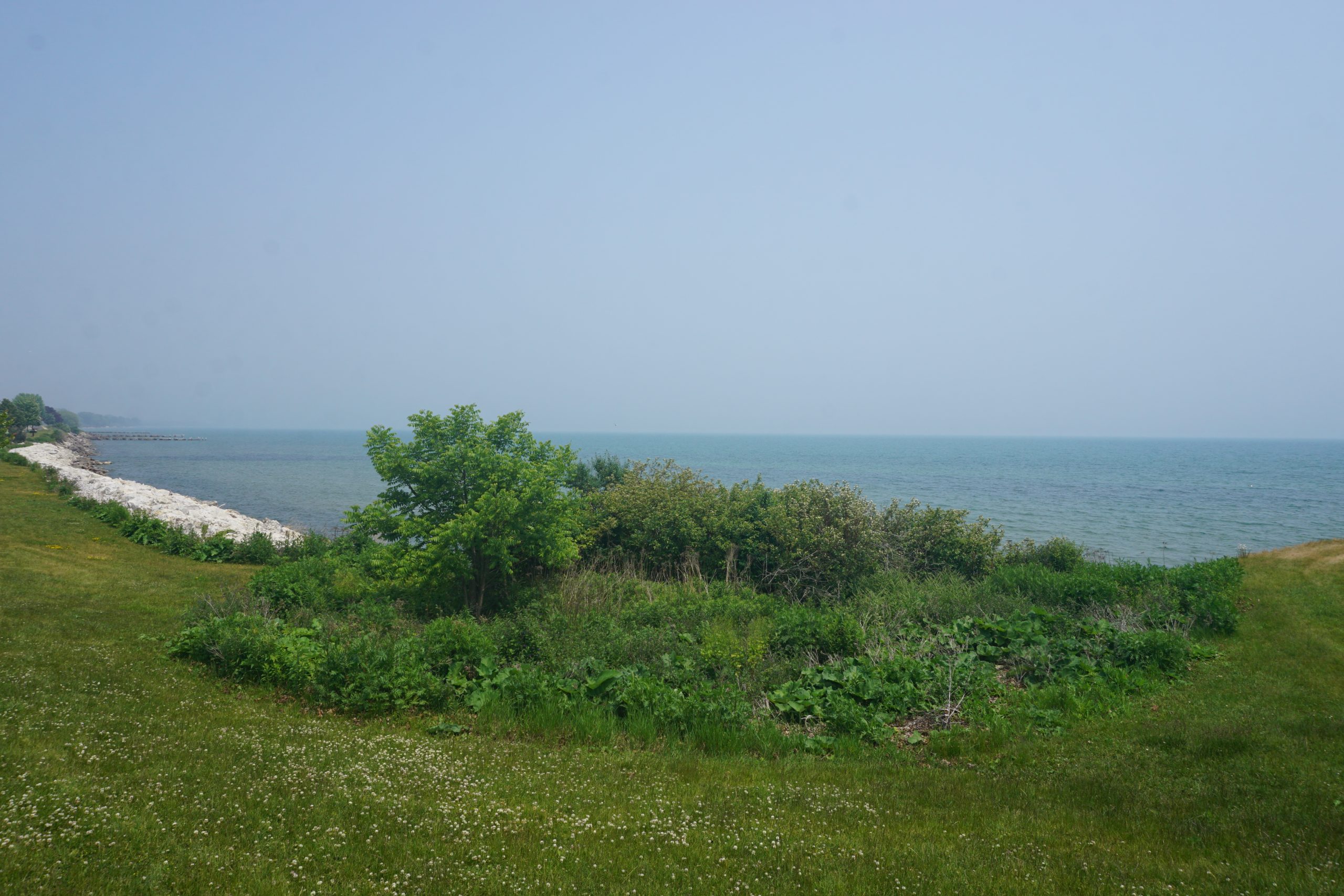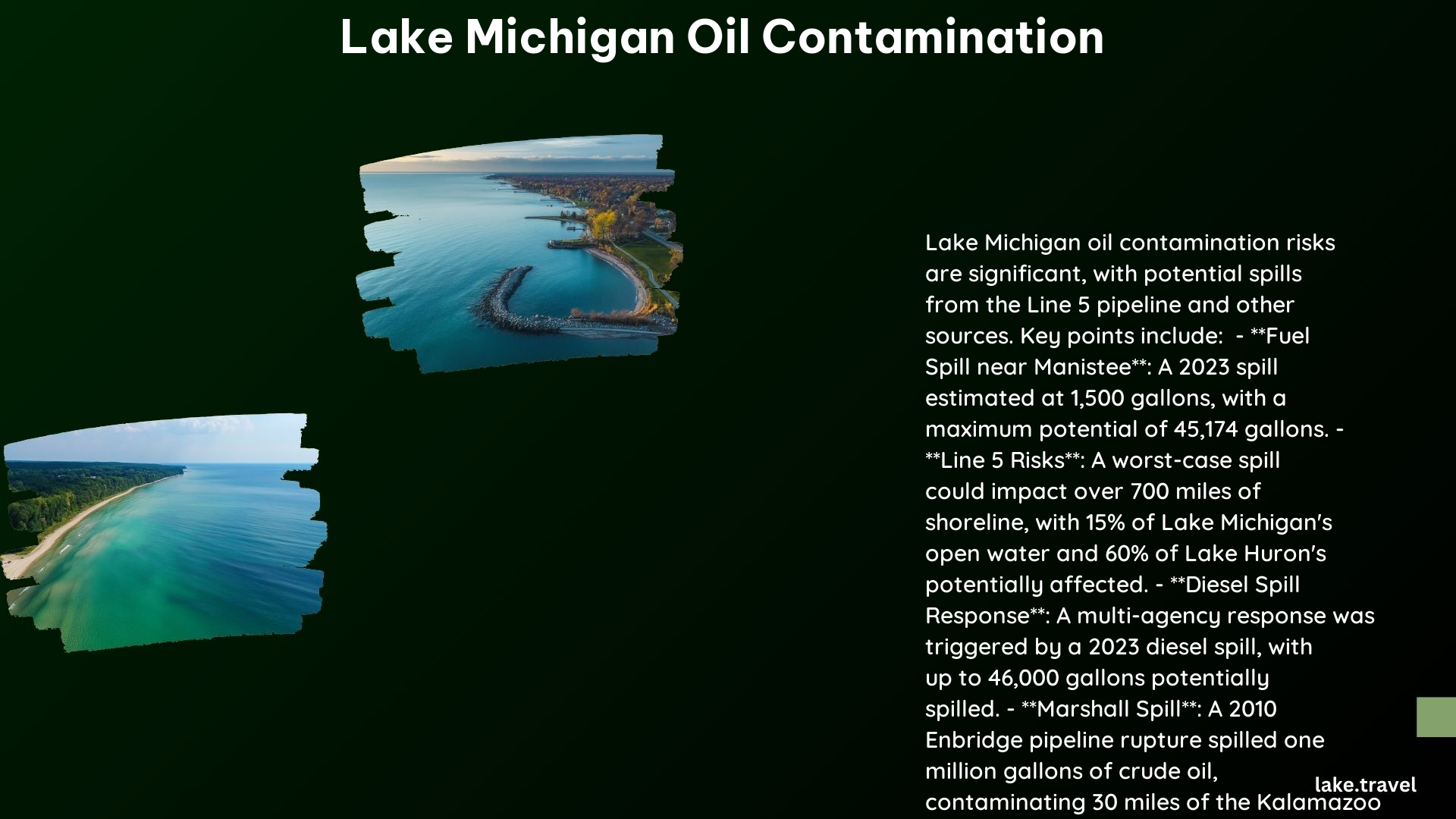Lake Michigan, one of the Great Lakes, is a vital natural resource that supports diverse ecosystems and local communities. However, the lake is not immune to the threat of oil contamination, which can have devastating consequences for the environment and the people who rely on it. In this blog post, we’ll explore the potential sources of oil contamination in Lake Michigan, the impact it can have on the ecosystem, and the measures being taken to prevent and clean up such incidents.
Potential Sources of Oil Contamination in Lake Michigan

Maritime Accidents
One of the primary sources of oil contamination in Lake Michigan is maritime accidents. Vessel breaches, such as the Manitowoc diesel spill, can release significant amounts of oil into the lake. The Manitowoc spill, for example, was estimated to have released up to 45,174 gallons of diesel fuel into Lake Michigan.
Pipeline Ruptures
Another potential source of oil contamination is pipeline ruptures. Pipelines like Enbridge’s Line 5, which runs under the Straits of Mackinac, pose a significant risk of oil spills. A rupture of this pipeline could contaminate both Lake Michigan and Lake Huron, with devastating consequences for the surrounding ecosystems.
Other Human Activities
Oil spills can also occur due to other human activities, such as oil tanker accidents, oil refining and storage facility leaks, and illegal dumping. These incidents can have far-reaching impacts on the environment and local communities.
Impact of Oil Pollution on the Ecosystem of Lake Michigan

Environmental Damage
Oil spills can contaminate wetlands, farmlands, and residential areas, affecting local ecosystems and wildlife habitats. The Kalamazoo River spill, for instance, contaminated 30 miles of the river and affected the local ecosystem.
Health Risks
Exposure to crude oil can cause respiratory illnesses, nausea, and headaches in humans. It also poses a risk to aquatic life, potentially leading to mortality, deformities, and lower growth rates.
Economic Impacts
Oil spills can have significant economic impacts on local communities, affecting industries such as fishing and tourism.
Measures to Prevent and Clean Up Oil Spills in Lake Michigan
Unified Command Response
In the event of an oil spill, a Unified Command is established to oversee and direct cleanup response efforts. This includes coordination among agencies such as the U.S. Coast Guard, state and local authorities, and the ship’s owners.
Spill Response Plans
Vessels and pipelines are required to have spill response plans in place, which include measures to contain and clean up spills quickly.
Research and Monitoring
Research initiatives, such as the University of Michigan’s study on the potential impacts of a Line 5 oil spill, help identify high-risk areas and inform response strategies.
Public Awareness and Education
Public awareness campaigns educate people on the risks of oil spills and the importance of reporting any sightings of oil reaching the shoreline.
Key Statistics and Figures
- Manitowoc Diesel Spill: Up to 45,174 gallons of diesel fuel were released into Lake Michigan.
- Line 5 Pipeline: A worst-case scenario spill could contaminate over 700 miles of shoreline in Lakes Michigan and Huron.
- Kalamazoo River Spill: Approximately one million gallons of diluted bitumen spilled into the Kalamazoo River, affecting 30 miles of the river.
- Cleanup Costs: The cleanup costs for the Kalamazoo River spill were estimated to be at least $725 million.
References
- https://www.manisteenews.com/news/article/lake-michigan-diesel-spill-response-efforts-18278962.php
- https://www.vnf.com/2044
- https://graham.umich.edu/project/mackinac-oil-spill
- https://www.manisteenews.com/news/article/lake-michigan-fuel-spill-near-manistee-estimated-18306596.php
- https://www.greatlakesnow.org/2023/08/diesel-spill-on-lake-michigan-triggers-multi-agency-response/
